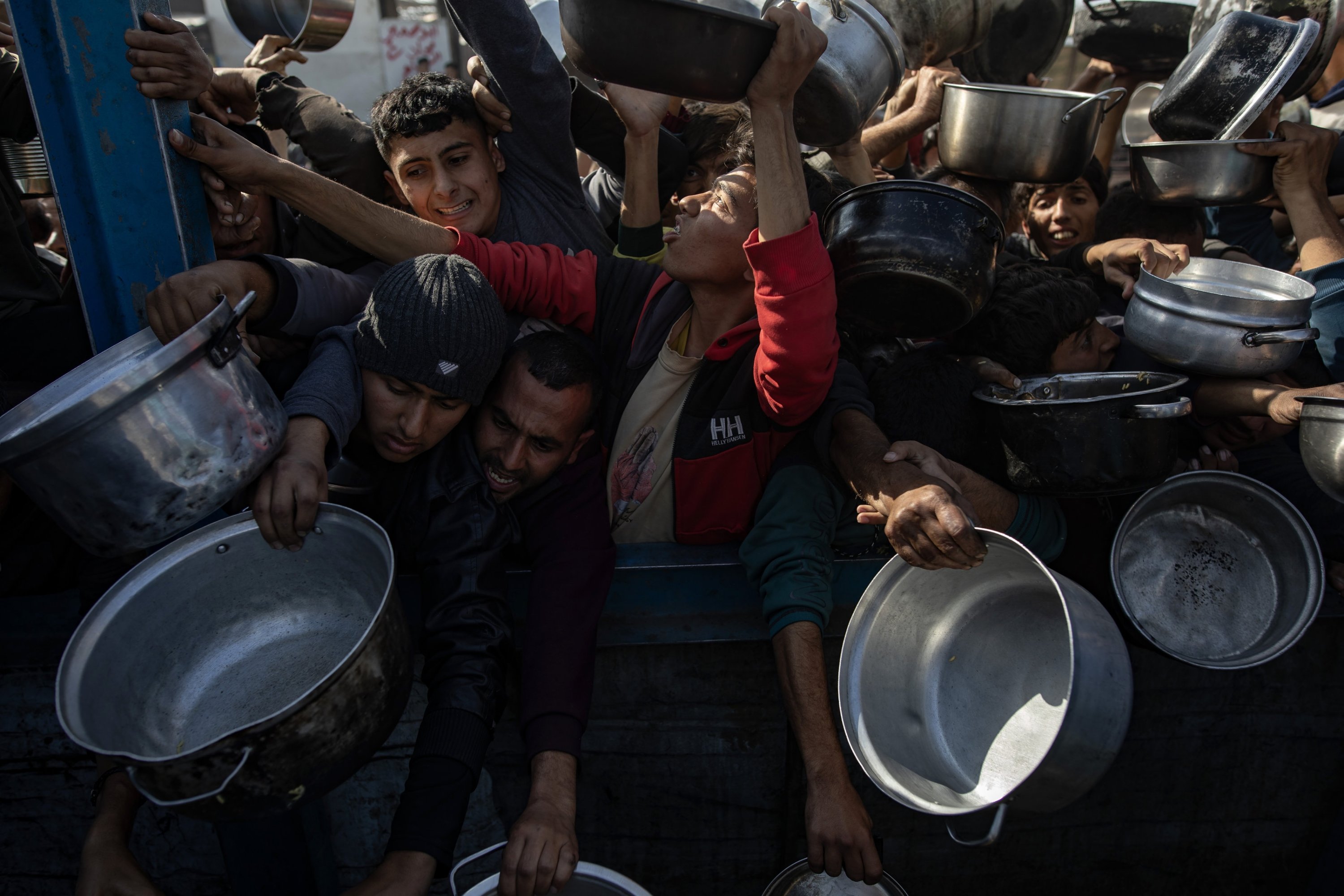© Turkuvaz Haberleşme ve Yayıncılık 2025
The Trump administration's push to slash and overhaul U.S. foreign aid is severely undermining the global system designed to fight famine.
Even before President Trump’s inauguration, hunger crises were spiraling in the developing world. But with the sudden suspension of U.S. foreign aid, the international relief network has faced massive setbacks.
Trump's spending freeze, imposed on Jan. 20, was set to last 90 days for a review of foreign aid programs.
While emergency food assistance was initially exempt, much of it remains in limbo, with humanitarian organizations awaiting clarification on which efforts are allowed to continue.
Adding to the chaos, the administration has moved to shut down the U.S. Agency for International Development (USAID), the country's primary relief agency.
This freeze has left over 500,000 metric tons of food, worth $340 million, stuck in transit or storage, with no word on when it will be distributed.
U.S.-funded cash assistance to places like Sudan and Gaza has also been halted, along with critical funding for volunteer-run community kitchens in Sudan that feed those in hard-to-reach areas.

Humanitarian groups are hitting roadblocks trying to get paid for emergency operations, as the usual USAID staff who field such inquiries have been placed on leave.
And perhaps the most troubling loss is the shutdown of FEWS NET, the Famine Early Warning Systems Network.
Without this critical entity, aid organizations have lost a vital source of guidance on where and how to deploy resources.
In addition to FEWS NET’s closure, the U.S. government recently issued stop-work orders to two major manufacturers of nutritional supplements, stalling supplies of life-saving food for malnourished children.
Mana Nutrition’s CEO, Mark Moore, emphasized the urgency: "Little children who are starving need help. Hundreds of thousands could die without USAID."
The U.S. government lifted the stop-work orders shortly after, but the damage is done.
With USAID’s funding halted, FEWS NET’s future remains uncertain, leaving a significant gap in global famine relief efforts.
As the world’s largest donor of humanitarian aid, the U.S. contributed $64.6 billion over the past five years – at least 38% of the total aid reported by the United Nations.
Yet, in 2023, nearly 282 million people faced severe hunger in 59 countries, with ongoing conflict and instability pushing more into desperation.
Even before the freeze, the global famine-fighting system was already under strain.
Now, this two-pronged crisis – struggling to prevent famine and respond to ongoing crises – has been worsened.
For example, nearly 30,000 metric tons of food, meant for Sudan’s malnourished, sits idle in hot warehouses, risking spoilage.
Without the guidance of FEWS NET, experts warn the international famine response is being left adrift.
Founded in 1985 after devastating famines in Africa, FEWS NET used data from multiple sources to provide early warnings of food crises. Its reports informed U.S. and global aid decisions, often prompting the United Nations’ IPC system to act when political pressures slowed responses.
FEWS NET’s efficiency is unmatched – producing over 1,000 reports in 2024 compared to just 71 by the IPC.
As Alex de Waal, World Peace Foundation executive director, put it: "Without FEWS NET, the IPC system is crippled."
Its loss could accelerate famine’s return as a political tool, warned Chris Newton from the International Crisis Group, adding that FEWS NET’s closure leaves a gaping hole in global food security efforts.
